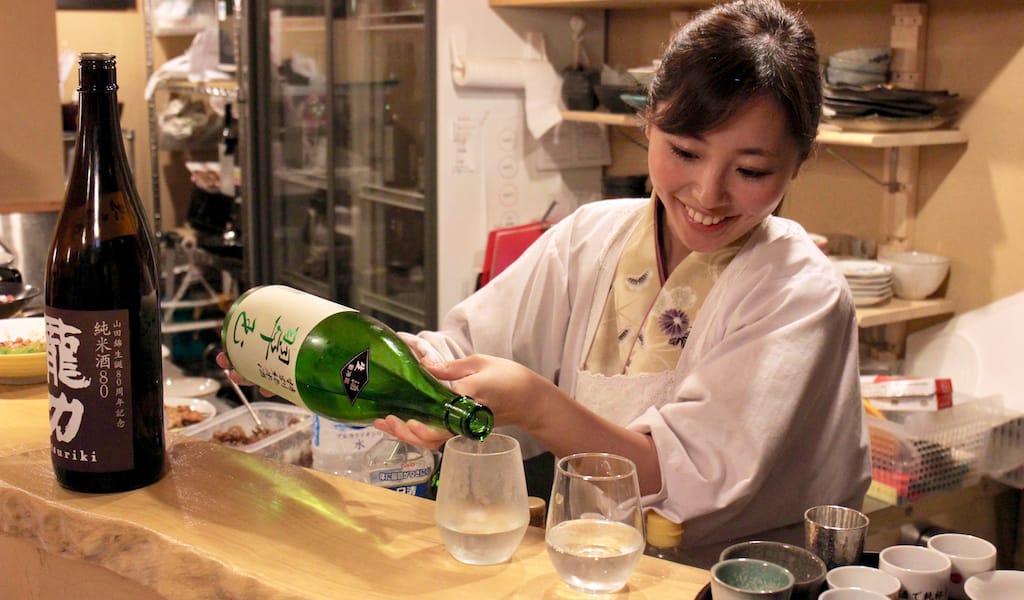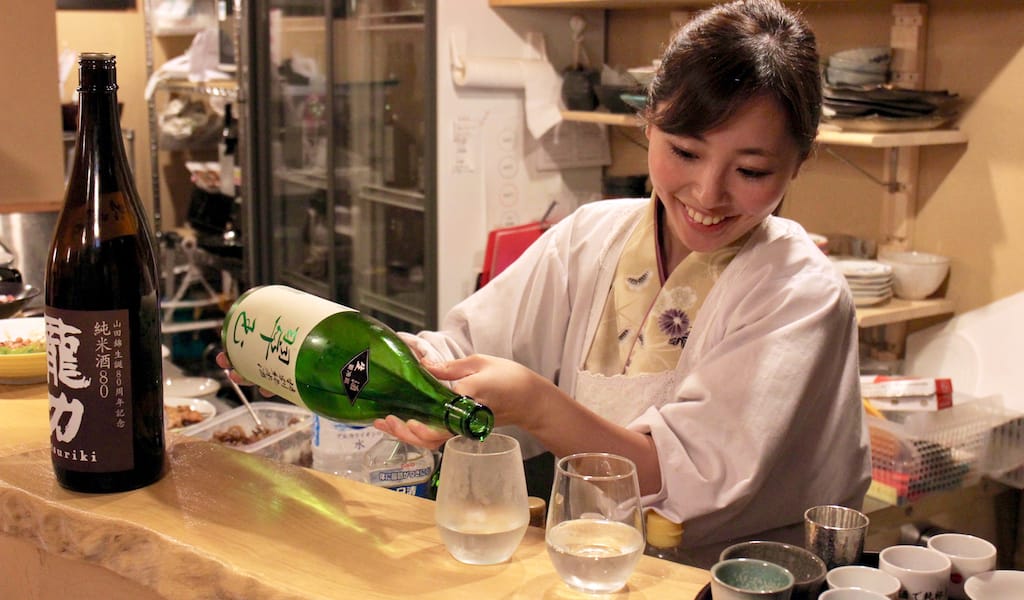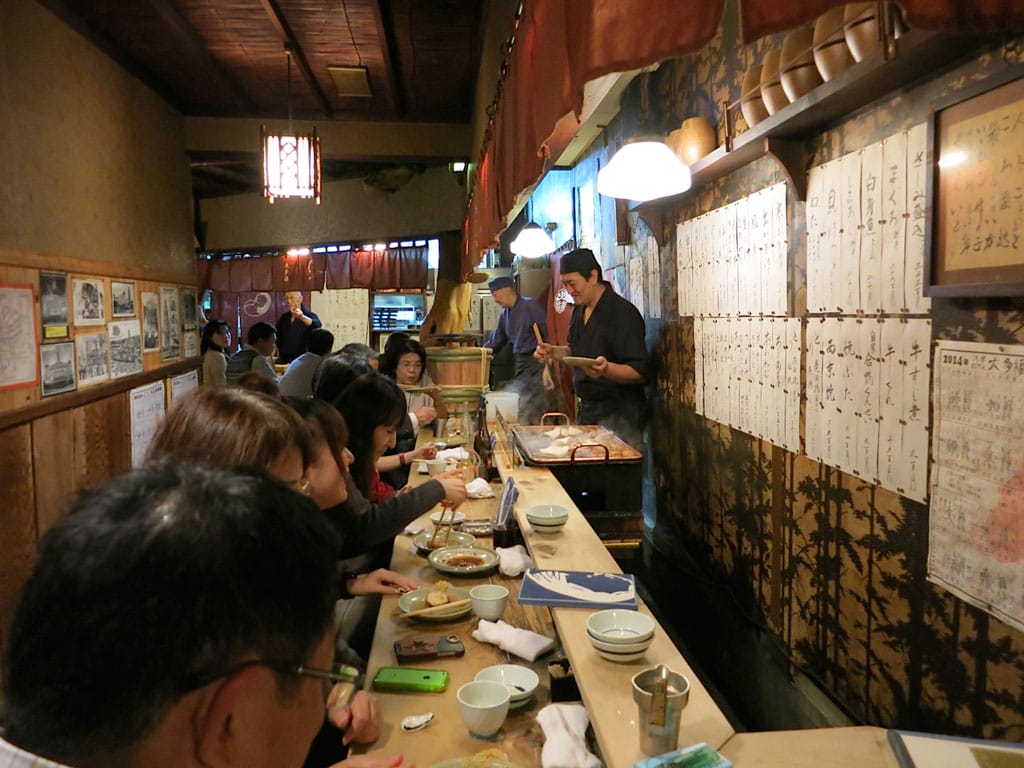Sake is a very deeply ingrained part of Japanese culture and its function is everything from ceremonial to social. It might be surprising then to know that there are remarkably few establishments in Tokyo dedicated to simple sake tasting. This is perhaps because the roots of public sake drinking stretch back to the 1800s, when sake was bought directly from a seller and often consumed on the premises with bits of food.
Back then, people stood next to sake kegs and enjoyed the brew, eventually turning crates and barrels on their sides and sitting to enjoy their drinks. Food was soon added and the izakaya was born (a sakaya is a place to purchase sake, and the “i-“ prefix means “to stay.”). So one could easily say that indeed a sake bar is an izakaya.
Although it’s located in a particularly upscale-looking destination, Hasegawa Saketen still offers the very original experience of visiting a sake shop to sample and then purchase sake by the bottle. The Omotesando Hills building, designed by Tadao Ando and one of Tokyo’s most celebrated modern architectural destinations, has no stairs or elevator (there’s an escalator in the back) and winds upwards from the street via a snakelike walkway that brings one up several floors past super trendy shops. At the very top is Hasegawa Saketen.
There are no crates nor barrels turned on their sides at this shop, but tucked right next to the entrance is a small counter where guests are invited to sit (“Please don’t stay more than 45 minutes to make room for others,” reads a sign), and every day the sake sommeliers open a variety of sakes sold in the shop for tasting. There are refrigerated cases filled with a selection of many kinds of sake from around Japan and also many kinds of ceramic guinomi, or sake cups, and glass vessels for pouring and drinking sake. The place is immensely popular because the tastes are varied and extremely well priced, affording a splendid way to sample and learn about sake.
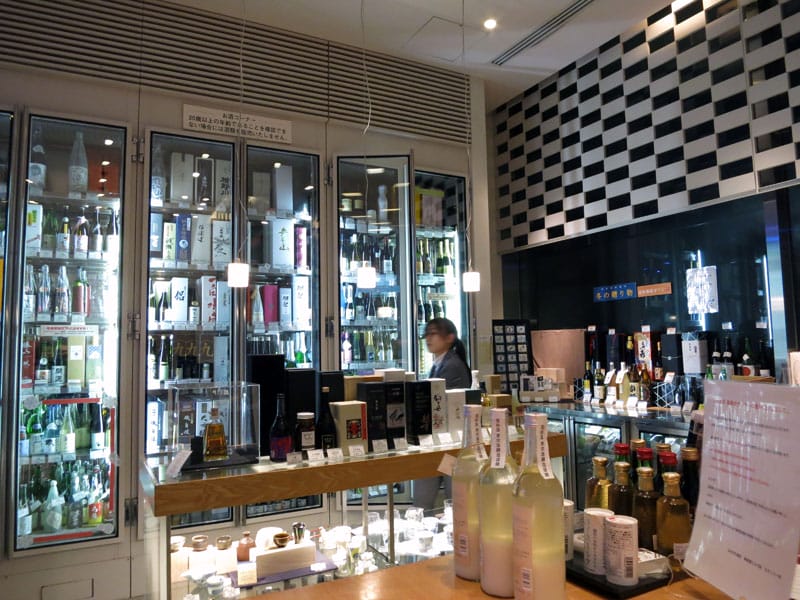
On a recent visit, the shop was featuring six sakes. Unlike at a Western-style wine tasting, one is not expected to swirl or spit at a sake tasting. The two slightly more expensive sakes (US$8 for a generous pour) were a Kiddo from Wakayama Prefecture and a Gikyo from Iichi Prefecture, both Junmai Daiginjo, the highest classification of sake. This category has the least acidity and most umami. Junmai sake contains only rice, water and the fermenting agent koji; there is no distilled alcohol added. In a Daiginjo, at least 50 percent of the outer layer of the rice is removed by milling, exposing only the sweetest and tastiest part of the kernel.
There were also two “new” non-aged sakes available (about US$5 per pour): a special Junmai from Yamagata Prefecture called Jyo Kigen and Ugo No Tsuki, a Junmai Ginjo from Hiroshima. The slower-fermenting Ginjo has only 40 perfect of the rice milled off and around 10 percent distilled alcohol added.
We enjoyed the more adventuresome offerings, starting with a glass of Bijyofu, a Nigori, or sparkling sake. Nigori sake appears cloudy or milky due to its mainly unfiltered qualities. This Kochi Prefecture gem from Hamakawa Shoten brewery is slightly effervescent and has passed through only a coarse cloth and is served unpasteurized. The taste was lightly fermented, slightly dry and sharp. At 16 percent alcohol, the small champagne glass at around US$5 was quite perfect.
We rounded out our tasting with a 14 percent alcohol Junmai Daiginjo from Nagano Prefecture. Our host poured from a scarlet-colored bottle and told us the bottle color changes from time to time. Ozawa Brewery uses an unusual B-class of rice for this sake. What was most striking was the emphasis on the Junmai-like taste of rice and an overlay of a smooth, ginjo-ka fruity fragrance with a mild aftertaste.
Hasegawa Saketen is the perfect place to wade in slowly to learn about sake and experience it the way residents have for many years. Savoring perhaps five sakes a day, it would take nearly seven years to properly taste and relish all the sake produced by the nearly 2,000 sake breweries in Japan!
All of the customers who visited during our tasting at Hasegawa Saketen were clearly locals. The staff is quite friendly and eager to pack up and wrap bottles chosen from the coolers for either local consumption or travel. The coolers are also packed with a smart assortment of craft beers from around Japan. Small bags of nuts and nibbles are sold from baskets along the wall, and there are tins of tsumami tapas foods to consume at home or elsewhere.
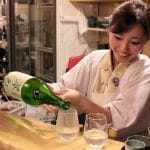 December 12, 2018 Best Bites 2018
December 12, 2018 Best Bites 2018
This was a year of culinary highs for sure, one that involved freshwater eel, lamb […] Posted in Tokyo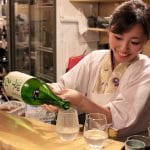 August 21, 2018 Kiyoi
August 21, 2018 Kiyoi
Bustling Shibuya has in many ways become modern Tokyo’s most emblematic district. Its […] Posted in Tokyo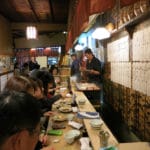 January 15, 2024 Otafuku
January 15, 2024 Otafuku
The weather is turning cold and Japan’s convenience stores, or konbini, have hauled out […] Posted in Tokyo
Published on January 16, 2017
Related stories
December 12, 2018
TokyoThis was a year of culinary highs for sure, one that involved freshwater eel, lamb ramen, sake and more. Kyuri Cucumbers at Sobaya Nicolas Following a visit to Kyoto’s Nishiki Market, I felt myself yearning for local kyo yasai, vegetables from the Kansai region of Japan. That night we were invited by a local artisan…
August 21, 2018
TokyoBustling Shibuya has in many ways become modern Tokyo’s most emblematic district. Its famous “scramble crossing” intersection – so-called, we imagine, out of a mixture of affection and exasperation – has in itself become a global Tokyo icon. Yet as sensory-bombarding as the junk food outlets, striking fashion choices and camera-happy throngs are, the fringes…
January 15, 2024
TokyoThe weather is turning cold and Japan’s convenience stores, or konbini, have hauled out the oden service pans and positioned them next to the cashier counters. For those not familiar with oden, the sight of assorted flotsam and jetsam afloat in a clear broth and the fishy aroma impinging on their space while paying for…












































